Ars Nova Workshop at 25
an interview with founder Mark Christman, whose curations on stage, in galleries, and in books have been a beacon of creativity in Philadelphia for a quarter century
My first experience with Ars Nova Workshop was when my soon-to-be boss and mentor, Don Lucoff, took me to the International House in West Philly to see Henry Threadgill’s Zooid. It would turn out to be the first time (of many) seeing Threadgill and also my first of many shows at International House. That venue felt like the perfect place to foster a community of Philadelphia jazz and creative music appreciators. The convener was Ars Nova Workshop, run as a volunteer effort for 15 years by Mark Christman with a small army of other volunteers including Eugene Lew, Stephen Buono, Taylor Haughton, Jesse Kudler, and many many more. In 2015 Ars Nova was able to “secure a major transitional grant from the William Penn Foundation” to be able to become make Christman “a full-time Executive Artistic Director and to create a professional infrastructure to support long-term financial and programmatic planning.”
I can say unequivocally, that Zooid show at International House changed my life. Through Ars Nova, I went on to see (and often, later work with) so many artists who became my musical heroes. I distinctly remember shows by Stephan Crump’s Rosetta Trio, Eyvind Kang & Jessica Kenney, Paul Bley solo, Cecil Taylor solo, Mats Gustafsson & Thurston Moore Duo, Rudresh Mahanthappa Quartet with Vijay Iyer, Francois Moutin and Dan Weiss, F.A.B. Trio (without Billy Bang), Big Four with Steven Bernstein and Noel Akchoté, Buffalo Collision with Ethan Iverson, Tim Berne, Hank Roberts, Dave King, Taylor Ho Bynum, Weasel Walter, Mary Halvorson, Jessica Pavone, Tomas Fujiwara, William Parker and Hamid Drake, Farmers by Nature (Parker, Craig Taborn and Gerald Cleaver), Lotte Anker, ICP Orchestra, Mostly Other People Do the Killing, Myra Melford, Mark Dresser, Matt Wilson (as Trio M), Exploding Star Orchestra (the night I first met Rob Mazurek, Mike Reed, Jason Adasiewicz and others; memorably we had a late dinner afterwards at the White Dog Tavern (apparently now known as White Dog Café) just on the edge of UPenn’s campus).
These early shows took place as a “movable feast” model at (largely West Philadelphia venues on or near UPenn’s campus) such as International House, Houston Hall, Fisher-Bennett Hall, Community Education Center, The Rotunda, and the (now defunct) Philadelphia Art Alliance. Christman hey had previously presented at Tritone on South Street, I’ve heard. These are just off the top of my head. These were all before Ars Nova had a permanent space at Solar Myth (of which Christman is a part owner).
Christman’s programming for ANW opened my mind to artists I certainly hadn’t learned about studying music at Carnegie Mellon University or had only cursorily discovered on older recordings in my role as Music Director at WRCT-FM at CMU. We weren’t seeing most of these artists covered in mainstream jazz media; a few here and there, but not many. This time for me living in Philly, from 2006-2009, seeing at least 3-4 Ars Nova shows a month had a deep and lasting impact on my musical and professional life. I would meet one of my best friends for life and eventual business partner, Stephen Buono at an Ars Nova Show at Community Education Center (pretty sure it was the Eyvind Kang/Jessica Kenney show). And I met so many other musickers there in my early 20s such as trombonist Dan Blacksberg, bassist Matt Engle, superfan Mark Forman, taper and superfan Tom Leies, photographer and writer Ken Weiss, broadcaster J. Michael Harrison, guitarist Nick Millevoi, saxophonist/now videographer Dan Scofield, critic Francis Davis, Fresh Air host Terry Gross, journalist Bobbi Booker, saxophonist Elliot Levin, label founder Daniel Piotrowski, percussionist Kevin Diehl and many others through ANW.
For all of this, I have Mark Christman to thank. As previously reported by
Here’s a lightly edited version of our (very) long conversation…
Mark Christman (MC): [after hearing me recount some of these shows above]…Wow, time flies. Hearing you mention all those names and moments brings back so many memories. Some of those experiences I haven’t thought about in years, but they’ve all been part of an extraordinary journey. As we approach Ars Nova’s 25th anniversary, it feels overwhelming to reflect on everything and everyone who’s shaped the work we’ve done.
Matt Merewitz (MM): I’d love to hear about your early journey in music. What was your first instrument, the first record you bought with your own money, or the first concert you remember attending?
MC: Even as a young kid…music, art, and curiosity were central to my life. I was into magic as a child—my parents even sent me to a university course for it because I had such an interest. My first cassette purchase might’ve been a 45 of Twisted Sister, but the first truly impactful album was Raising Hell by Run-D.M.C. Growing up during hip-hop’s golden age, I was captivated by it. It opened a door to a world I didn’t know but felt compelled to explore, and it shaped my path toward the music I present today. This music from Queens—Run-D.M.C., A Tribe Called Quest, and others—was happening just blocks from Milford Graves’ house. While I didn’t know who Graves was back then, hip-hop, along with artists like MC Hammer and the Beastie Boys, was my gateway. My first concert was MC Hammer at Stabler Arena in the Lehigh Valley, where I also saw life-changing shows like Nirvana, Anthrax, and Public Enemy.
“Growing up during hip-hop’s golden age, I was captivated by it. It opened a door to a world I didn’t know but felt compelled to explore, and it shaped my path toward the music I present today. This music from Queens—Run-D.M.C., A Tribe Called Quest, and others—was happening just blocks from Milford Graves’ house. While I didn’t know who Graves was back then, hip-hop, along with artists like MC Hammer and the Beastie Boys, was my gateway.”
MM: That’s incredible. It seems like you were gathering music culture in every way you could. How did you absorb it all?
MC: This was pre-Internet, mostly. In the early-to-mid ’90s, record stores were my go-to spots. I’d hang out and browse magazines like Rolling Stone, The Source, and Spin. Grunge, punk, and hardcore were big for me at the time, and I was always drawn to the fringes—the more experimental aspects of those genres. That curiosity eventually led me to improvised music and artists like John Coltrane, Miles Davis, and John Zorn.
It was always about chasing the next musical high, whether through record stores, zines, or live shows. My journey was a constant search for the unexpected, which ultimately shaped my programming approach at Ars Nova Workshop.
The three most important punk and hardcore labels of the ’90s, Revelation, Dischord and Victory Records at least for me, really shaped my perspective. One band, in particular, Iceburn, was incredibly creative and experimental. They were a hardcore band trying to transform themselves into something like Mahavishnu Orchestra, electric Miles Davis, or even King Crimson. They completely changed the way I thought about music. This was a band most people haven’t heard of—and still probably haven’t—but they opened up an entire world for me. Their recordings were transformative because the band was always evolving. Experiencing them live, though, was on a whole other level. After that, I wanted to always find music that pushed boundaries like that.
MM: What kind of hardcore was coming through the Lehigh Valley at that time? Were you experiencing it live as a 14-year-old, or was it mostly through recordings?
MC: Both, actually. There were plenty of places in Allentown and Bethlehem where under-21 kids could go. Firehouses and community centers often hosted shows. Plus, I wasn’t far from a few college campuses, and even a few hours north of Allentown there were random clubs presenting hardcore music. On top of that, Philly and NYC were just an hour or so away, so I had access to these bigger hubs.
I used to skip school to go to South Street, hit record stores, and spend money I didn’t have on stuff I didn’t even know about. Most of it was music- or art-related, of course.
MM: Did you ever use early internet forums or bulletin boards to connect with the scene?
MC: Not really. I wasn’t into creating community online. I wanted to get out there and meet people, see things in person. I never said no to a concert or a record store, no matter how far away it was. I’d grab every flyer, every free zine I could find. When I got to college in Philly, the alt-weeklies became super important for finding music and events.
Once I figured out where music was happening, I started planning my life around it—calling places like the Trocadero, keeping track of releases, and organizing my calendar around live shows.
MM: Any other big influences from the early ’90s besides Iceburn?
MC: Definitely. Two standouts were the Nels Cline Trio from LA and Tim Berne’s Bloodcount. Those were both really pivotal for me. We’re talking experimental, improvised music that tied into my love for heavier sounds. I gravitated toward improvised music through that heavy edge.
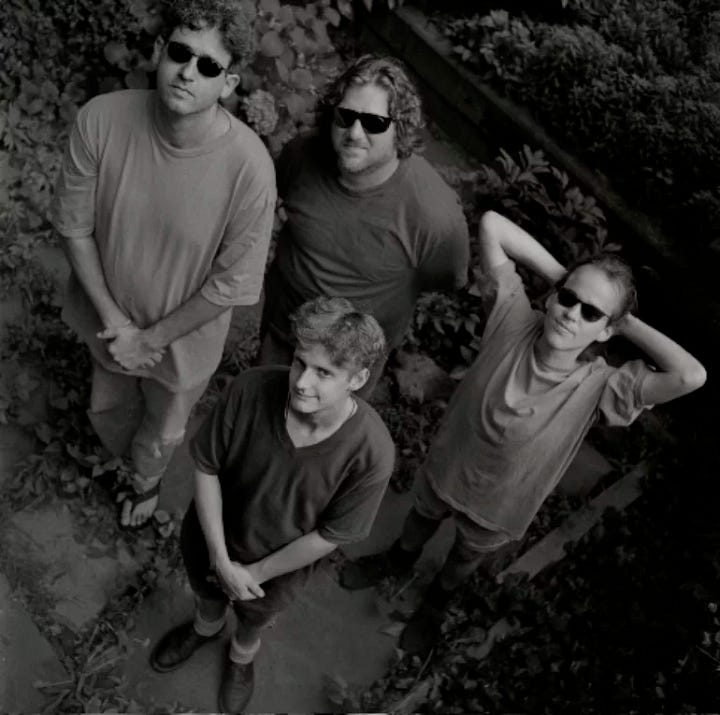
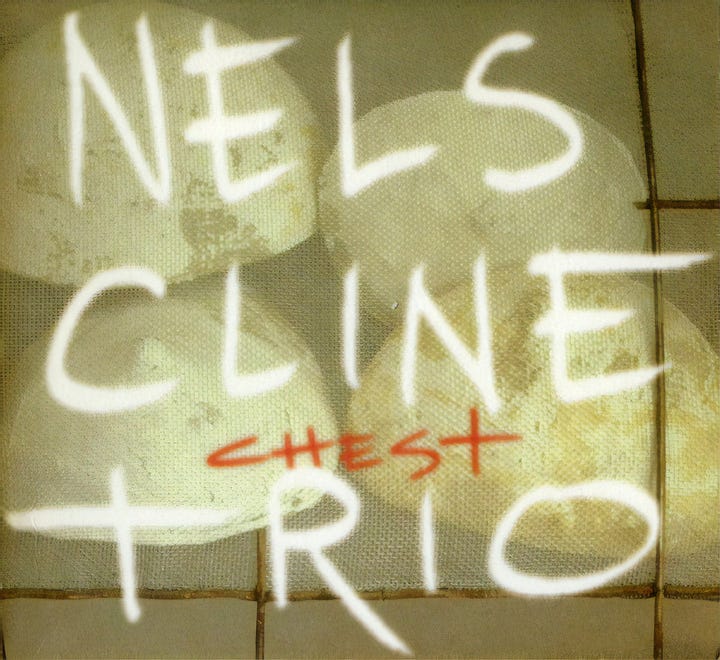
It was such a rapid discovery process. You start to see the connections between artists, scenes, and spaces—like the Knitting Factory in NYC, Knitting Factory Records, or John Zorn’s work. It just opens up an endless world of ideas and opportunities.
I remember being a fan of Nels Cline for years before I ever saw him live—probably 5 to 8 years before he started performing on the East Coast in ways I could access. And this was well before Wilco.
MM: You went to Drexel University for college.
MC: Yeah, but I started out at Kutztown University, a state school outside of Allentown. I spent two years there before transferring to Drexel. Kutztown was really formative for me, though. Some of my closest friendships and musical experiences are rooted in those two years. But within days of being there, I realized I needed to live in a city—somewhere more vibrant.
MM: How did you start presenting music? Were you still in college, or did that come later?
MC: I graduated in winter 1999, and by the following spring of 2000, I had started a music series at a historic theater in the Rittenhouse Square area of Philadelphia. It all happened pretty fast after graduating Drexel.
Around that time, I met Nate Chinen at a record store, and we became fast friends. He was already heading to New York to work on George Wein’s book, so our friendship ended up being long-distance. But before he left, Nate told me about this cabaret space at the Plays and Players Theater where he’d played drums for an event. They were looking for someone to help present jazz there, and Nate suggested me. For some reason, I went for it—and that’s how I got started.
MM: How much time did you actually spend at Drexel? Was it two years in Kutztown and two years in Philly? Or did you graduate very quickly from Drexel?
MC: So, I transferred to Drexel after two years at Kutztown. Drexel has a five-year program because of their co-op system. It’s a pretty intense program, and it’s on a quarter system, so you’re constantly moving. One of the main reasons I chose Drexel was because of the co-op model—it’s very hands-on. You spend six months in the classroom and six months working.
I’ve always been entrepreneurial and have had jobs for as long as I can remember, so the co-op system appealed to me. When I transferred, I essentially joined a three-year program after my two years at Kutztown.
My two co-op experiences at Drexel were really formative. In one, I gained a lot of weight, and in the other, I lost a lot of weight. Both were intense, consuming, and lucrative. Interestingly enough, my second co-op offered me a full-time position after graduation—and that job, 25 years ago, actually paid more than what I earn with Ars Nova today! So, I learned a lot, especially about what I didn’t want to do with my life.
MM: What industries were those co-op jobs in?
MC: One was with Rupert Murdoch’s magazine group—TV Guide. The other was with Aldi, the German supermarket chain. Both were intense and valuable experiences, but I was grateful that they weren’t permanent.
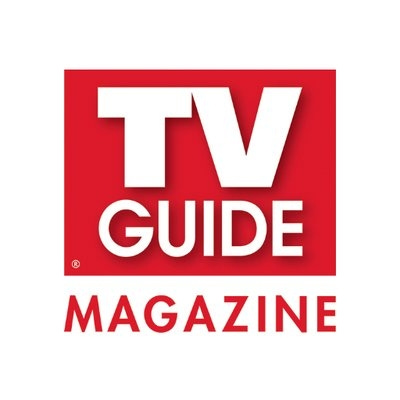

The thing is, during that time, I also found my people. I was playing music, managing the band, getting us a 7-inch record, landing a record label, getting us press, and booking tours.
MM: What was the band called?
MC: Lanyard. Yeah, you’re not supposed to know it—nobody does. But I still have a stack of 7-inch records if you want a collector’s item.
MM: And you were the drummer in that band, right?
MC: Sort of—I was a second drummer. In that band, I was somewhere between the most important and the most useless member, depending on how you look at it. But I loved it. It brought me in touch with what I truly enjoy doing, and it was just another muscle I wanted to flex.
Even though I’m introverted by nature, I’ve always wanted excuses to talk to people, to share something, or to ask questions.
MM: That’s funny because you mentioned Nate earlier. He’s such a diplomat, isn’t he?
MC: He really is. More than helping me realize Ars Nova or my interest in presenting music, I spent a lot of time with him as a young man. Nate always operated in this professional, polished way—probably since he was five years old.
MM: What did you learn from him?
MC: I learned how to be an adult. How to channel my curiosity, engage with people, ask thoughtful questions, and, most importantly, how to listen and learn.
MM: You’ve mentioned being introverted, yet you’ve also been such a community builder, a dot connector, and an instigator. Was there some kind of push-pull between your introversion and the person you wanted to be?
MC: Absolutely. It’s always been a bit of a balancing act. I’m a quiet person at heart, but I’ve always been enthusiastic about what I love—and I guess that enthusiasm is what gets me talking and connecting people. I’m more about letting the work and the connections speak for themselves.
MM: You used to just say something simple like, “Here are the artists. Please welcome them,” and that was it. It was just the music and this inherent sense of community. I always thought that was special. That makes me curious because you’ve said you’re an introvert, but you also clearly have non-introverted tendencies.
MC: Yeah, I don’t have all the answers for that. As a young person, I wasn’t afraid to put myself out there in certain ways. I’d go knock on someone’s door and introduce myself, or pick up the phone to make a connection. I even got up in front of my elementary school and performed a terrible magic show for a thousand people. But I think that was before my adult brain fully formed—before the anxieties of the real world started creeping in.
Talking to people one-on-one or in small groups, though, that’s where I’m comfortable. It feels more authentic, more intimate. I can perform, but only to an audience of one or two. That’s just my nature.
MM: When I met you, you were working a full-time job [at University City District] while also presenting shows at night all over West Philly and beyond. How did you manage your job with your passion for presenting and building community? Were they separate, or did they intertwine?
MC: They were separate, but also deeply connected. Ars Nova, to some extent, has always existed in this nonprofit, gift-economy space—where it’s about passion and purpose, not punching a clock. It’s not for people looking for traditional stability. For years, I lived two professional lives. I had two full-time jobs—one to pay the bills and one for my passion. My “day job” was also nonprofit work, which I loved but didn’t pay much. I needed it to pay rent and buy food, but my heart was in running Ars Nova.
For the first 15 years, Ars Nova was essentially a volunteer effort—a hobby organization. It wasn’t until we got a transformative capacity-building grant from a Philadelphia-based foundation that I was able to focus on it full-time. But even now, it’s like I’m running two full-time jobs within Ars Nova itself: making sure we have money and figuring out how to use that money to execute our mission. It’s a lot, but I’ve always been someone who’s willing to do whatever it takes for something I care about.
MM: What’s it like now, managing people and running an organization after doing everything alone for so long?
MC: Hopefully, as a founder, you evolve over time. In the early years, you hold onto everything tightly, but eventually, you burn out on certain tasks and become more interested in other aspects of the work. You have to let go—not just of certain responsibilities but also of total ownership—and you embrace others taking the reins. It’s been a long process, but I’ve reached a point where I genuinely enjoy seeing other people talk about Ars Nova as if it’s their own. That’s incredibly rewarding.
Of course, we’re still small. We’re only three full-time staff members, with a lot of part-time and contract workers. We do an extraordinary amount with very few resources—producing catalogs, hosting major traveling exhibitions, presenting over 100 concerts a year, running our own venue, and maintaining a 20-plus-year archive. People see those outputs and think that’s what Ars Nova is about, but most of my time is spent building relationships, developing projects, and tackling long-term legacy work, like transforming the Sun Ra house or working with the Coltrane family to preserve their legacy in Philadelphia.
“Ars Nova, to some extent, has always existed in this nonprofit, gift-economy space—where it’s about passion and purpose, not punching a clock. It’s not for people looking for traditional stability. For years, I lived two professional lives. I had two full-time jobs—one to pay the bills and one for my passion. My “day job” was also nonprofit work, which I loved but didn’t pay much. I needed it to pay rent and buy food, but my heart was in running Ars Nova. For the first 15 years, Ars Nova was essentially a volunteer effort—a hobby organization. It wasn’t until we got a transformative capacity-building grant from a Philadelphia-based foundation that I was able to focus on it full-time.”
MM: It sounds like you’ve expanded Ars Nova’s mission to include so much more than concerts. There are exhibits, books, community projects, and now this work with the Sun Ra estate and Arkestra. Do you feel like you’re running the organization improvisationally—coming up with new initiatives on the fly?
MC: In a way, yes. Improvisation is at the heart of everything we do—not just in the music we present, but in how we operate as an organization. Improvisation teaches us to complement each other, be flexible, and embrace uncertainty. Those principles aren’t just musical; they’re a model for life and change. I truly believe that institutions—and society as a whole—have moved away from the values of improvisation. But values like hospitality, adaptability, collaboration—are exactly what we need to function better and create meaningful change.
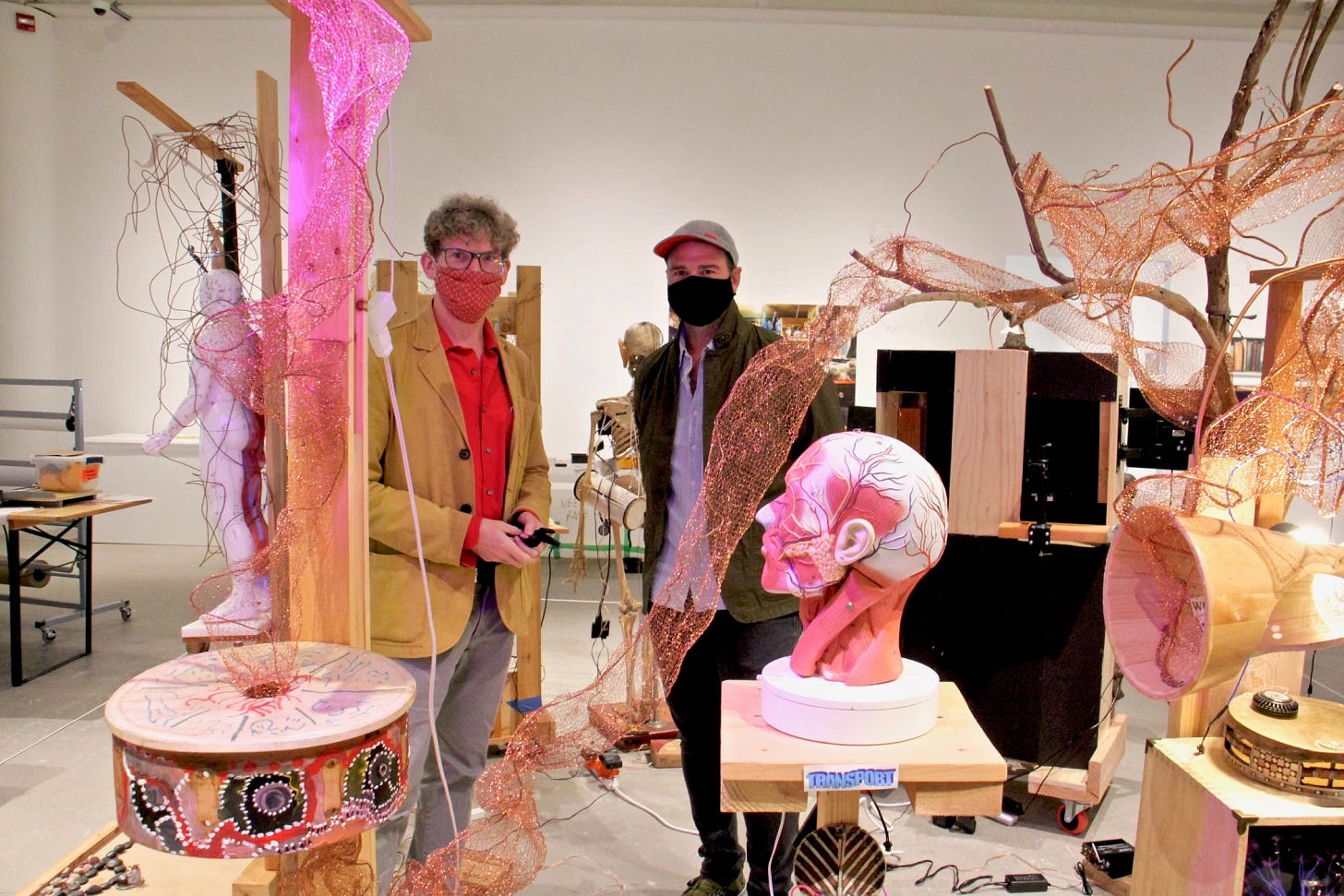
MM: It used to be that you presented concerts, and that was kind of it. But now you’re doing these exhibits and catalogs, like Milford Graves: A Mind-Body Deal you’re doing books, writing-focused projects, art-focused stuff—and I recently found out that you’re working with the people who run and live in the Sun Ra house and the Arkestra. You’re thinking about the future of their legacy in Philadelphia—what happens when Marshall Allen and others are no longer with us. How do you keep that going?
MC: I think strategy is really important. For anyone to do their work well, they need to understand why they’re doing it, how they’re going to do it, and they need a plan. You also have to be in touch with the demand for what you’re doing and your capacity to achieve it.
It takes a high-functioning organization and staff. It requires a clear mission, a strong vision, and shared values. It also involves difficult conversations, resource-building, and a commitment to creating an organization that can sustain itself through a transformation—from a traditional presenter, working in more transactional ways, into something greater.
Presenting this music isn’t just about bringing audiences together to hear extraordinary music from extraordinary musicians. For me, this music represents resilience and solidarity. It models social cohesion, inspires nonconformity, and opens up possibilities for alternative futures. It’s about new forms, unexpected collaborations, and risk-taking.
But all of that requires running a real organization—with staff, expertise, and a high-functioning board. I can’t do it all myself.
MM: You probably have a lot of things on your vision board that you can’t achieve right now but hope to at some point, right?
MC: Absolutely.
MM: That brings me to something else. When you brought bands to Winter Jazz Fest in New York last year, I noticed something. It felt like you, as an organization, had somehow evolved in your taste, becoming more inclusive of mainstream sounds. When I first attended Ars Nova shows 18 years ago, the aesthetic felt very specific. Now, it seems broader, while still honoring the original artists you championed.
Did you adopt a bigger-tent approach to better serve the community? Or was it about staying inspired and keeping things sustainable?
MC: I get what you’re saying, and there’s some truth to it. The free jazz movement—what’s often called the post-Coltrane continuum—has always been the foundation of Ars Nova. It’s the world I was introduced to through the Vision Festival, people like Steven Joerg, William Parker & Patricia Nicholson Parker, John Zorn, and others.
But this isn’t about dissonance or accessibility. I think the work we present has remained consistent. Maybe the perception has changed, or maybe the culture has evolved around the music.
MM: So, you’re saying the culture has caught up to the music?
MC: Perhaps. I’ve noticed more people are hungry for this work now than 20 years ago, but not because the music has changed. It’s timeless. It’s just that more people are connecting with it now. Trends cycle, and people enter into these worlds at different times, often influenced by forces outside of my control—branding, marketing, or whatever else.
But Ars Nova’s work has always been consistent. Sure, we’ve grown—doing more events now because we have the capacity and the demand. But if you compared the names we presented in 2003 to those in 2023, you’d see a lot of overlap.
MM: That makes sense. Let me ask another question. Over time, it seems like you’ve focused more on developing Philadelphia artists and weaving the city’s identity into Ars Nova’s branding.
In the early years, it felt like you were bringing in top artists from New York and beyond, giving Philadelphia a stop on their tours. Now, with projects like the Marshall Allen collaboration and others, it feels like there’s more emphasis on building something uniquely Philadelphia. Do you think that’s true?
MC: Certainly! The world of music has definitely evolved. I think it’s important for an organization like Ars Nova to move beyond the transactional and into a more relational environment—connecting with artists and the communities their art originates from. It’s about being more intentional, creating space for dialogue, and, ultimately, transformation.
I mean, I don’t want to sound overly idealistic, but like Coltrane said, “I want my music can be a force for good.” More than that, though, it reminds us that nothing less than a radical transformation of humanity and society will do. It’s also critical to recognize that the music Ars Nova presents isn’t mine. It belongs to others—it’s Black creativity, born out of Black life and culture. Philadelphia has played such a significant role in shaping what I believe to be one of America’s greatest contributions to the world. But historically, these communities are often the first to be robbed of what they created.
To your question about developing Philadelphia artists and the local community over time versus curating favorites from elsewhere, I think it’s fair to say that in the early years, I was focused on bringing in music that didn’t have a home in Philly. I wanted to create a space for performances I wasn’t seeing locally—artists like Cecil Taylor, Muhal Richard Abrams, and Anthony Braxton. It was almost selfish, in a way, because I thought, “Why should I have to leave a city of nearly 2 million people to experience this music?”
Philadelphia has this incredible musical lineage—Sun Ra, Dizzy Gillespie, Billie Holiday, John Coltrane, Rashied Ali, The Heath Brothers, Benny Golson—but at that time, there weren’t many opportunities to experience that avant-garde energy. I cared a lot about developing myself as a curator back then, and while that was valuable, I don’t think about it in the same way anymore. Now, I care more about connecting Nova’s work with community-driven goals, about building and sharing power through partnerships, and about centering the voices of Philly’s artists.
Music has this unparalleled ability to bring people together, and jazz—if we want to call it that—is probably the greatest American invention. But even beyond that, it’s a deeply human endeavor. So, yes, I think our focus now is on ensuring more Philadelphians see themselves reflected on stages and that we create more opportunities for local musicians to thrive without feeling they have to leave for places like New York, LA, or Berlin.
There’s definitely been a brain-drain in Philadelphia. Christian McBride, for example—he left at 17. That’s been the model for generations, with so many musicians moving away. But Philadelphia has consistently produced extraordinary talent. And while I think we’ve made strides in showcasing and incubating Philly artists, there’s still so much untapped potential. It’s a city where people grow up surrounded by diverse influences, synthesize all of that, and evolve into incredible creators.
We’re seeing shifts, though. New York has become prohibitively expensive, and Philly has become more of a destination. But even with that, there’s still work to be done. There are so many emerging artists and voices that we don’t yet know about, many of whom are finding audiences in less traditional ways—on TikTok or through other platforms. We’re trying to remain tapped in through our board and collaborators like Anthony Tidd, but there’s always more to uncover.
The thing about this music is that it’s not just something you perform; it’s something you live. It’s taught and passed on in ways that institutions don’t always capture. It values individuality while emphasizing the collective—how you use your voice and lift others up in the process. I think those are lessons that extend beyond music and could truly make the world a better place if applied more broadly.
At the local level, I do see these values at work, even if they’re not always reflected at the macro level. Organizations like ours—and the work being done by so many others—are making an impact, building something better right here in Philly. And that’s worth something.
I think this music has given me my life and has helped me challenge conformity. It’s taught me humility and helped me become more critical and focused on prioritizing the values I keep talking about—improvisation, reciprocity, and solidarity.
I believe dignity can arise from the power of creation, especially within a community. So, yeah, I think my role has a responsibility to move from the transactional to the relational—to ensure this organization becomes a dialogue and a space where more people can participate and help steer its direction and future, as well as respond to the needs of the city.
We talk a lot about monuments these days. We have two extraordinary monuments to the American dream and to Black creativity—the Sun Ra house and the Coltrane house. Honestly, you wouldn’t take your worst enemy to those places right now—not because you wouldn’t want to, but because they’re not treated like the monuments they truly are. They’re not maintained or celebrated the way similar monuments to other, often non-Black, contributors to life, culture, and ideas are.
I don’t know of two greater Americans than Sun Ra and John Coltrane. They represent the best of us, yet their families, their legacies, and these monuments haven’t had access to opportunities or resources that could’ve prevented them from falling into the state they’re in today.
So, when I say that presenting the music goes beyond the limitations of the stage or the recording, I really mean it. Milford Graves, for example, isn’t just one in a million—he’s one of many exemplars. These artists are not just creators; they’re healing artists, deeply woven into a towering tapestry of African American achievement. And yet, their contributions have been ignored, misunderstood, under-protected, and exploited.
MM: Are you saying the media, broadly, plays a role in this under-appreciation? Or is it something else?
MC: General media, yeah. And it’s not just that—it’s also about a lack of rigor and truth in how we talk about these legacies. For instance, if I read the last ten articles written about John Coltrane or Don Cherry, I’d find much of it repetitive, incomplete, and in some cases inaccurate. They’re understated, misrepresented, or just not done with the kind of depth or care these figures deserve.
MM: How did you come to the place where you decided Ars Nova needed to evolve from being primarily a presenter to something more—a model of community engagement through performance, visual art, written materials, and more? Was the Milford Graves exhibition the first of that kind? Or did it start earlier with something like the Don & Moki Cherry exhibition?
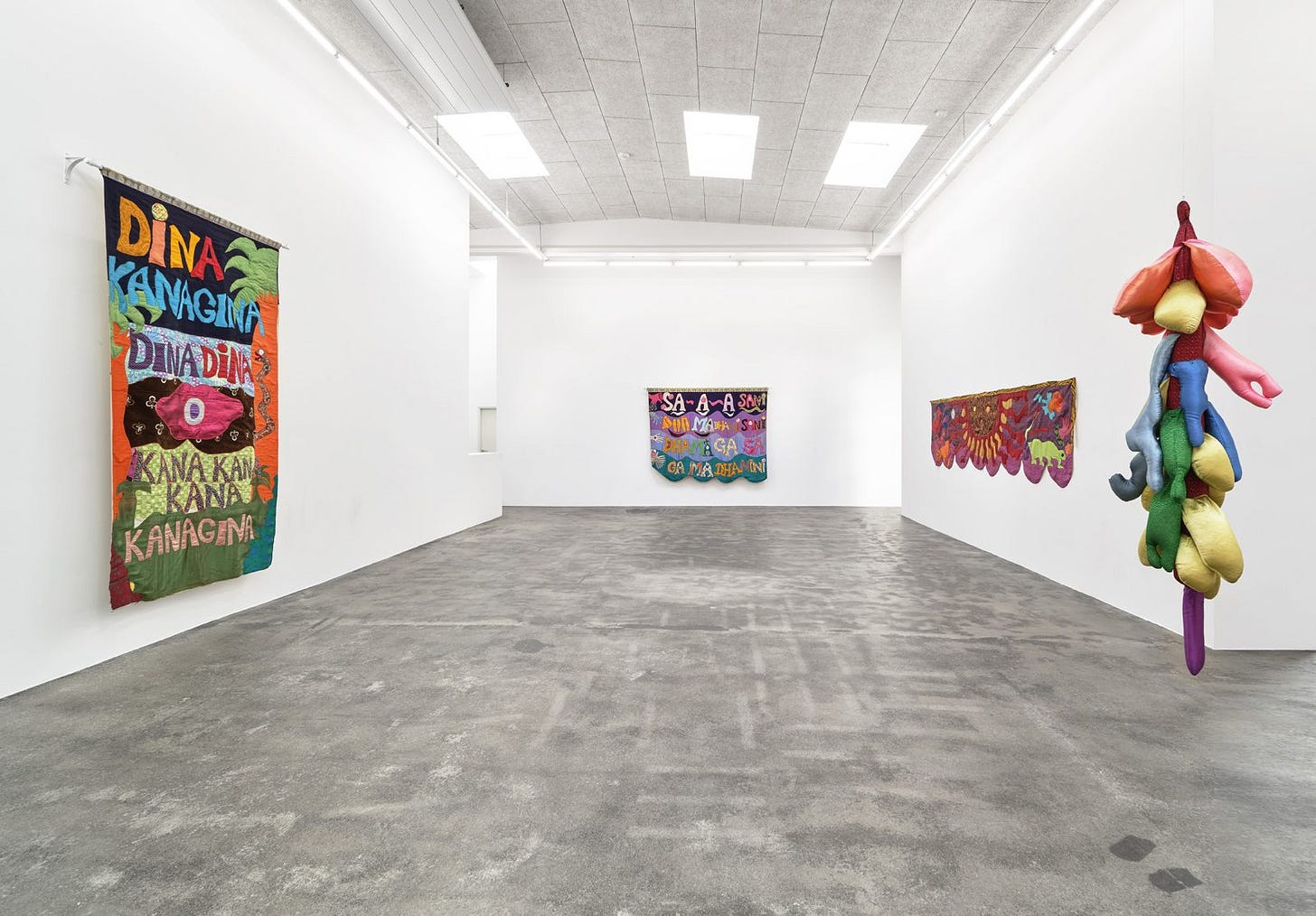
MC: I started working on the Milford Graves exhibition over ten years ago, though it wasn’t our first exhibition. We’d done smaller ones before. But I wouldn’t say we’re breaking new ground here.
MM: Was it always part of the mission, though, even if you couldn’t actualize it at first due to a lack of infrastructure?
MC: Yeah, it’s always been part of the story. To answer your question directly, though, it’s about relationships. When you care about more than just being a business that sells tickets—when you care deeply about the work itself—you become curious about the “why.” Why does it exist? Where does it come from? Who is making it, and why?
When you start asking those questions, you not only begin to understand jazz, these artists, and their ideas, but you start to see them as full people—beyond the bandstand, beyond the studio. Once you truly engage with them and their needs, you realize their stories don’t begin and end with recording an album or playing a show. Their stories are so much bigger.
MM: When you say relationships catalyzed this evolution, do you mean your relationships with artists, with the community, with your board members? Did changes within your board—like diversification—play a role?
MC: Absolutely. The organization, its board, and staff need to evolve, grow, and challenge themselves to be more rigorous in how we present and respond to the city, its history, and the musicians we work with. But fundamentally, it’s about trust—building trust with the artists we adore and the communities they come from.
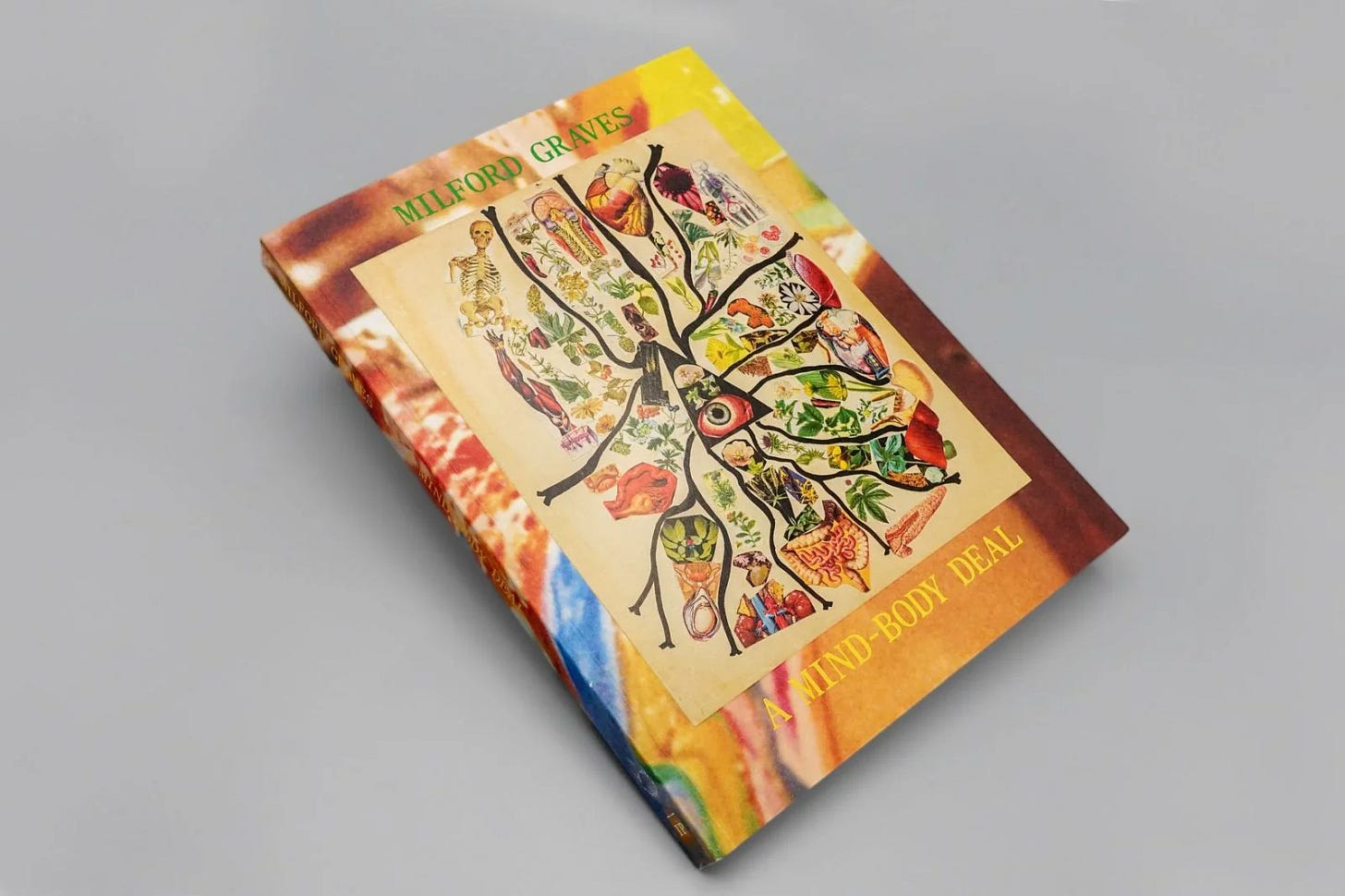
MM: How does the Milford Graves or Don Cherry work intersect with Ars Nova’s Philadelphia-based mission? Or is it more of a separate initiative?
MC: We’re a Philadelphia-based organization, but we also operate nationally and internationally. We want to do work here that can become models for other cities. Supporting Philadelphia artists, institutions, and audiences remains central to what we do.
There are connections between Milford, Don Cherry, and Philadelphia. But more broadly, our broader approach to stewardship in this art form will benefit Philadelphia significantly. It’s about creating archival resources and doing work that often happens outside the public eye, like teaching people how to preserve their old tapes and photographs.
MM: How long had you been searching for a permanent space like Solar Myth, and what were the hurdles to achieving it? Is there a vision for Ars Nova beyond Solar Myth, maybe something larger or even a return to a moveable feast-like model?
MC: I’ve always had one foot in the “venue” conversation. Solar Myth, which had previously been a honky-tonk bar and an indie rock club, was part of a broader effort to understand what worked and what didn’t.
Ars Nova spent over 20 years presenting shows in spaces all over Philadelphia—museums, galleries, clubs, and more. Those places, like Houston Hall at UPenn, the International House, the Philadelphia Art Alliance, and the Rotunda, were magical. They were essential to building community. Many of them are now closed, which speaks to broader challenges facing arts and cultural nonprofits.
We had a nomadic history, and while Solar Myth gives us a home base, the goal is to create a place where artists and audiences can come together—not just for a show but for longer, deeper engagements.
MM: What’s the biggest thing you’ve learned about yourself through this process of building Ars Nova to where it is today?
MC: I’ve learned how much respect and care I have for this work and these artists. It’s easy to roll out the red carpet for people you care deeply about, even when you don’t have much to offer financially. Every night, people come up to me at shows and thank me for creating a space where they feel at home.
This isn’t just about the music; it’s about building trust, respect, and community. Whether it’s through preserving legacies, engaging artists on their terms, or simply bringing people together in a meaningful way, that’s where the magic happens.
You can support Ars Nova Workshop’s mission, here. An almost-complete list of shows and events for the 25th anniversary season is listed here.

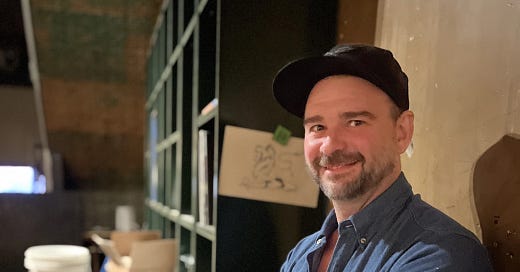


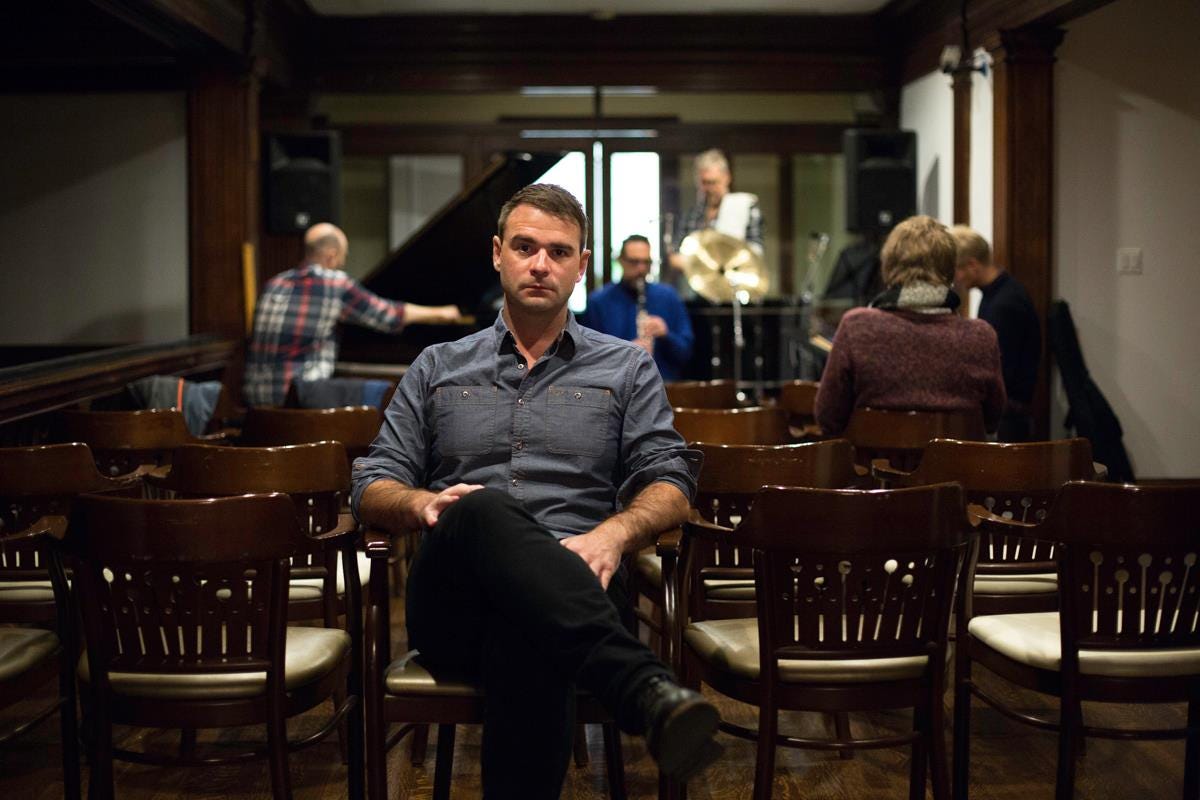

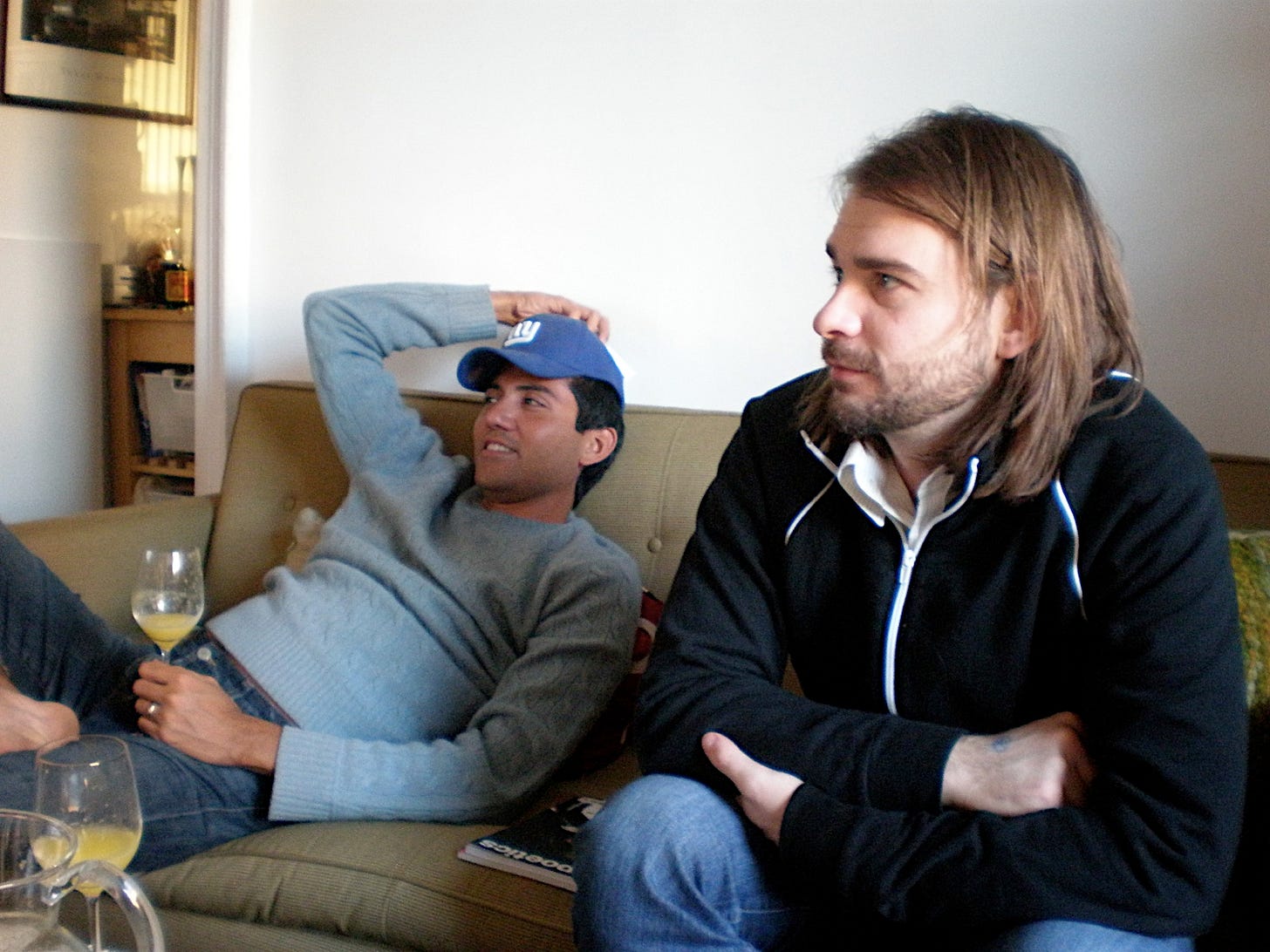

This piece sent me pleasantly down memory lane. Nicely put together, Matt. Mark is doing great work for not just Philadelphia but the whole world, especially with the Milford Graves work! My first Ars Nova concert was also at International House. I feel the same way about that venue, the audience was always diverse! I hope to be able to check out as many of the 25th anniversary concerts as I can.
Ooo, glad I’m stumbling upon this. Such a fan of Ars Nova’s programming and have learned a lot being in attendance just listening. This was a lovely read and great insight. Lots of wisdom. Thanks!